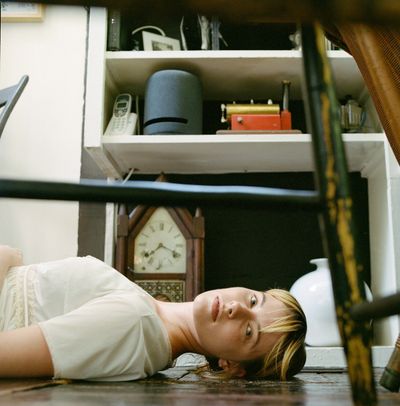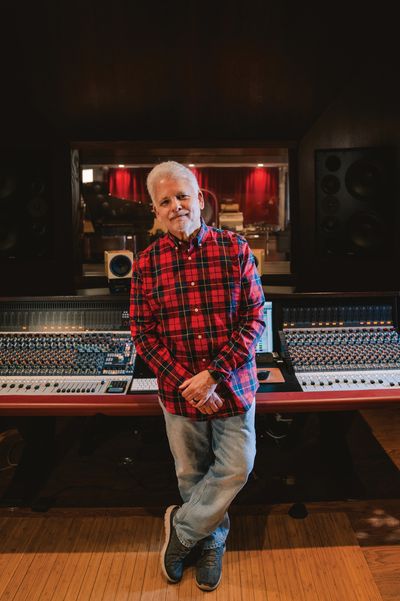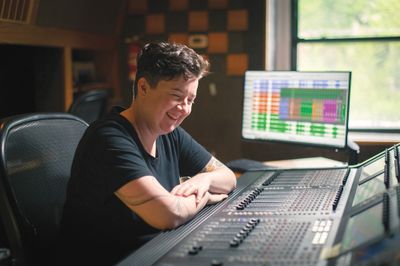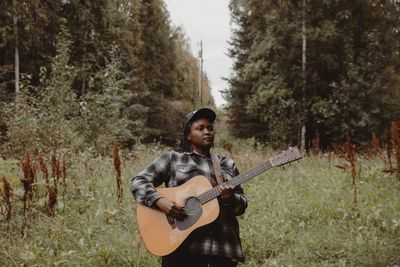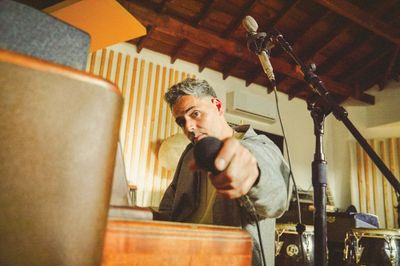Are you from Madison originally?
No. I grew up in Teaneck, New Jersey, which is like a suburb of Manhattan almost. My mom did commercial work, and is from a musical family, so I wanted to do production work of some sort and got involved with a multi-media company in Manhattan that was doing Fortune 500 magazine work at the time. This was in the early '80s. I was mentored by a really talented, but corporate- minded man, who taught me all about post- production sound for video, film and slide. I did that for about eight years and I got really burnt out on just the whole corporate environment that I was in. I decided to quit and go to school in Madison because I wanted to get out of New York. I came out to Madison and started doing live sound for a ska band about a year into moving here. I really had no idea how to do it. I would just help out all the guys in the club, just picking up stuff as I went along. During that time they told me about Smart Studios, which I didn't know existed — I didn't even know who Butch [Vig] [Tape Op #11] was. In fact, I don't think I had even heard Nevermind at that time. It was around the time that Butch was into Sonic Youth and Smashing Pumpkins work. I started interning there. At the time Smart was so much smaller — the place was really lo-fi but hi-fi studio. The guy that hired me there just threw me into sessions. I was just terrified when working with bands. Fortunately I was given the usual free time, with bands that I brought in, to kind of learn. I ended up doing a record for the ska band that I had been working with, at the time I think I did one session with Steve Marker, who is in Garbage, and I helped out. Doug Erickson used to do some sessions there. It was very informal seven years ago. So I hung around there for a couple of years, still doing live sound and then I started my own band. Then a guy that I met, at Smart actually, had a lead on a 16-track 1". It was available in Milwaukee, and he thought I could get it for $1500. I think I ended up paying two grand for it and I got this Logic mixer — all stuff from an old ad agency that had really low hours. So I picked up the deck and the board and I came across this old British board. Legend has that it's the old Cheap Trick live board. But I found this 24 x 4 x 2 Hill for $150, and everything worked on it. I mean it needed some modifications on it — like it didn't have direct outs or anything.
And that's not too hard.
Actually, I modified it and then I had this Logic 12 channel board that was really sweet and I would track on the Logic and do the tape returns through the Hill. So I started doing projects in the basement of the house I was living in. Really lo-fi set-up, but really good for crunchy rock and roll records. It was a way for me to do whatever projects I wanted, and not rely on the studio's time, but my own time. I began to work a lot more by having a studio. Madison, you know, is a real hotbed for bands that just want to do quick turn-around stuff. Like do a quick single, or their first demo on cassette. I was doing a lot of that work. The first studio was up for two and a half years, then they were tearing the house down. So I needed to decide if I was going to just stop or actually look for a space and upgrade. So I looked for about three months for a self-contained building in Madison, which was not easy to find. It took me three months to find one, I was looking everyday.
So you found a small warehouse space?
Well it's relatively big. It's 700 square feet. 15 foot ceilings. It's really, really comfortable. I think half the warehouse is the lounge.
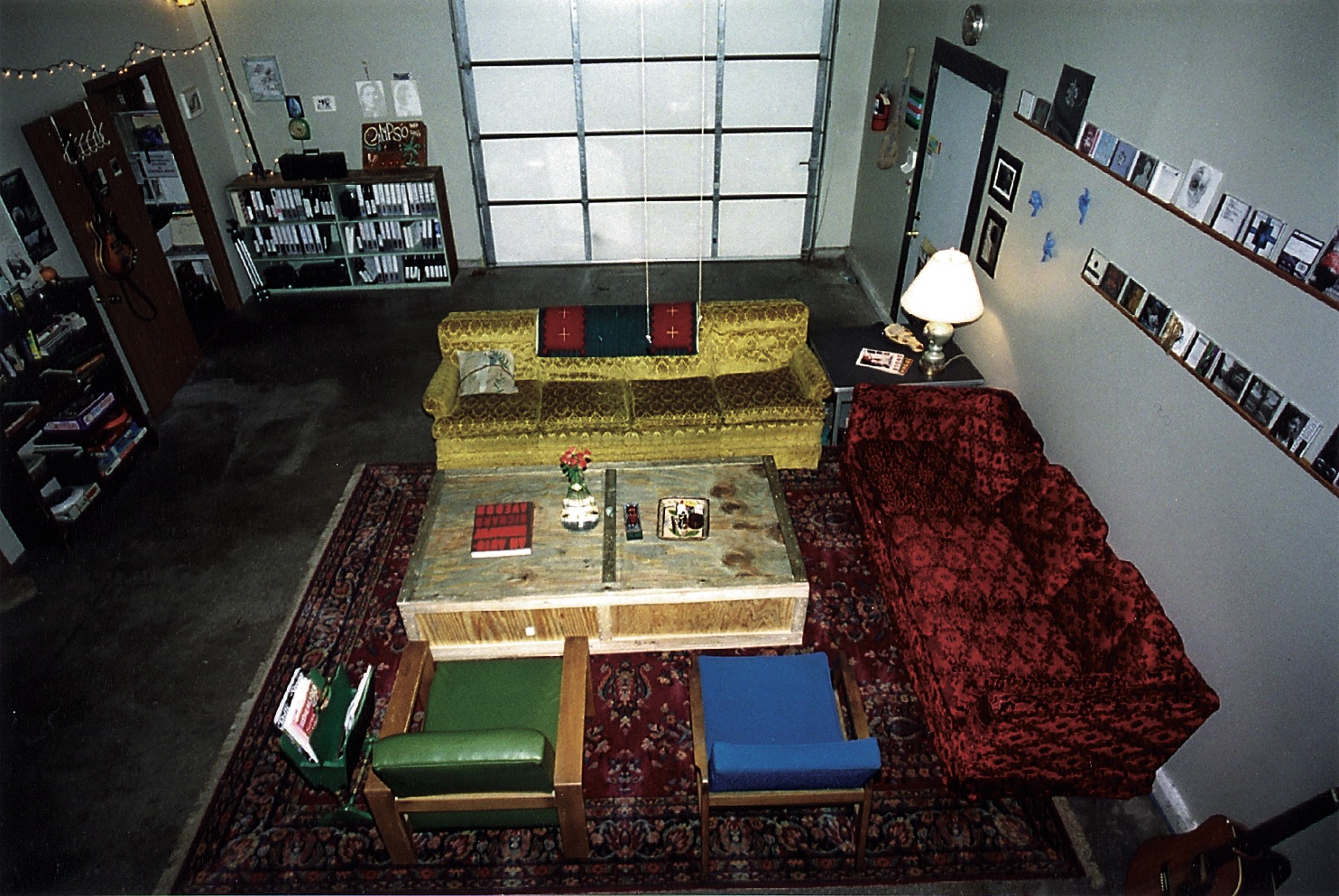
Are you renting?
Yes, I'm renting. It's scary to take big steps in this business.
Umm, yes it is! How did you start when you got the place rolling, even at your house, how did you get work initially?
It was a band that knew I was at Smart. They knew that I now had this $15-an-hour lo-fi set-up in my basement and there were a lot of bands that wanted to take advantage of that. I didn't have this huge reputation, but they knew that I kind of knew what I was doing. Actually, the first band I recorded were friends of mine from Columbus, Ohio. These guys, for some reason, drove all the way to Madison to make a record with me. I'm sure that I didn't charge them much, like a couple hundred dollars, to live in my house for a week and do this record. Then a friend of mine from Chicago brought his band up and some bands that I knew because I was in a band. Which has made such a difference in my career — to be in a band, play out and network that way. Honestly, the advertising that I've done, and I think I have taken out maybe two ads total in five years, has never brought me an ounce of business. People know Coney Island, and the more projects I do that sound good will bring in the calls. Bands, in general I think, enjoy coming to this studio. It's a very cooperative environment.
I think your lounge probably helps too though. You have a similar set-up to our studio. Your lounge is way bigger, but just having a place where people can kick back, relax and read magazines.
I used to not have that. I've put about $5,000 into the construction of the studio and that was just putting up walls in a very large room. I couldn't do much else because the landlord wouldn't let me. But the space was laid out in a way that it was just perfect for doing this kind of stuff.
How long did it take you, once you had the space, to get it all built up and open?
I think I signed the lease two years ago this August. I did three weeks with a carpenter, who really helped all my ideas materialize. Then I left to go to New York to work for three or four weeks straight to try and make up the money. In October I started doing sessions. When I had closed the first studio and opened this I wasn't turning away projects because I was really busy. I actually, in retrospect, was kind of insane to make an upgrade when I wasn't bursting at the seams. I learned a really hard lesson, in that it probably wasn't the best time to expand. I thought that I would open this place up and have an open house and I thought that I wouldn't be able to control the crowds. That so wasn't the case.
Really?
I mean it was business as usual. I had work but there wasn't a lot of work. There has been a steady increase and the projects are just getting better. I might not be as busy, every month, as I would like to be, but what I'm busy doing is pretty cool. So I think it was a good move. This is only the second year in the warehouse. I think I bring a lot of life experience to the sessions that I do. Just trying to guide people that I barely know through a process that is very hard for them. I work with a lot of bands that are recording for the first time, and it's taking them out of an environment that they are so comfortable with, like their basement, and having them set-up and perform. Having them become recording artists for the day. It can be a really delicate situation. I love working with bands who have worked in tons of studios and with different people.
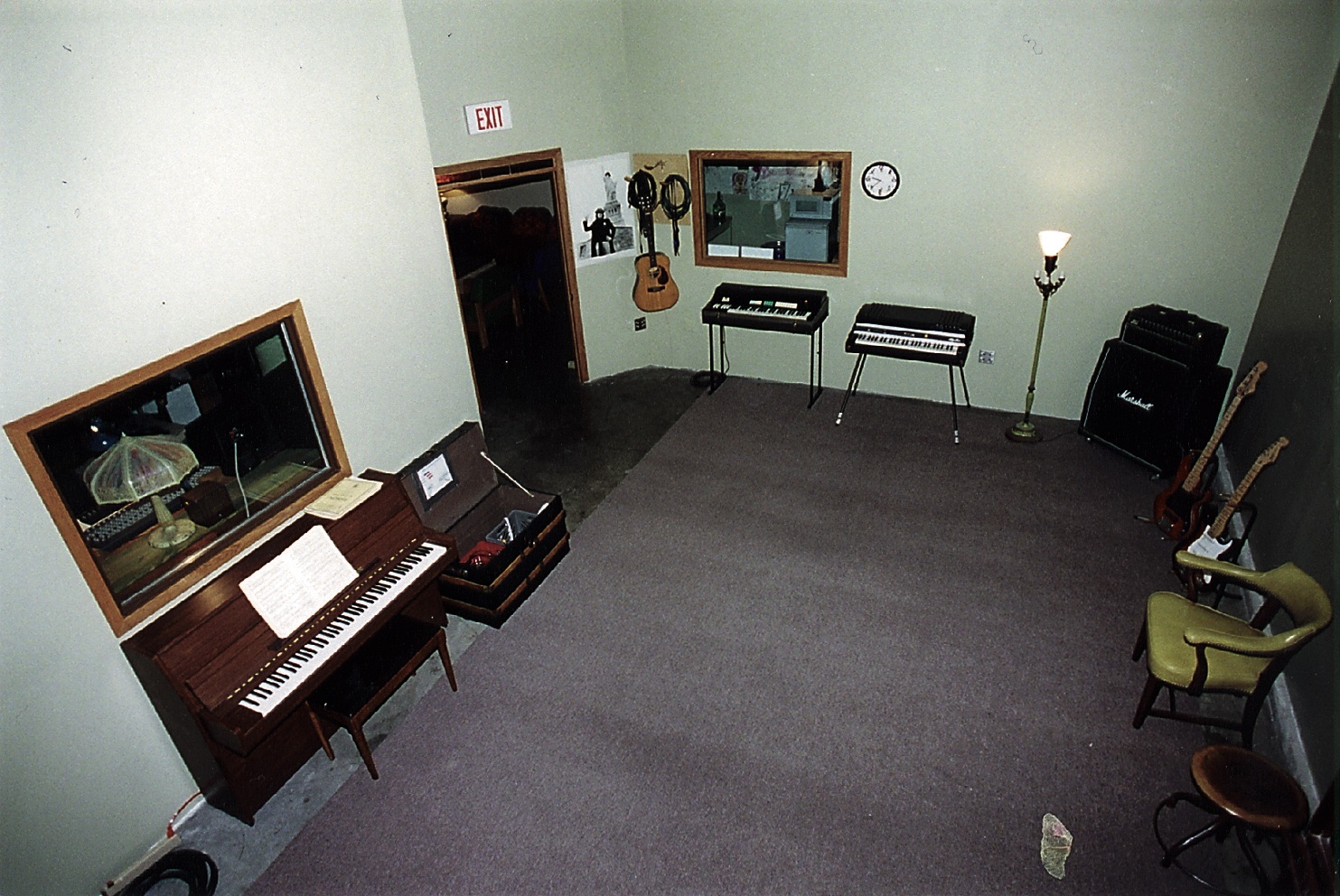
It's easier for them to get comfortable in the recording situation. You don't have to guide them through the very simple stuff. What kind of mics have you accumulated for use in there?
It's pretty basic. I have an AKG D112, an AudioTechnica Pro 25 that I'll use for toms and sometimes bass cabinets. I'll use a 57 on almost anything. I've got a Neumann U-67 that I can almost use on anything. Except shit that's really loud. I just paid $1000 to fix that U-67 — when the guy got it he was, "Ma'am they didn't make guitar amps that loud when this mic was made. So you really need to be careful." So I limit the use of that, but it is an amazing vocal mic. I just got an SM 7 as a stand-by, because I needed something that was full and warm that I could use in place of that U-67 in case it was being temperamental that session, and it sometimes is. Using these AudioTechnica 4033s for overheads are unbelievable. They are great microphones and really great on acoustic guitars. I have an old Sennheiser 421 which I really dig. I would like a couple more of those. It has to be one of my favorite mics. I think it is really underappreciated. God, you know a PZM gets thrown up sometimes. I've been using these microphones for about five years. I just set-up a session and start getting tones, and if it doesn't sound weird I just keep moving forward.
Yeah. Everyone has stand-bys that they know are going to work on certain things.
I would love a few more microphones. Like those Earthworks mics. I just got the SM 7 and the HHB CD burner and that just has me sitting for a while until the next time where I might have some surplus. But I would love to make the control room a little bit bigger and that will be a few hundred dollars. I could do some more soundproofing or deadening.
What are some of your favorite projects that you have worked on?
I just did a record for these guys, Songzilla, who are on Relapse Records. That was working with guys that have just recorded for years. It was one of the burliest recordings I think I've done since the Pachinko project a couple of years ago for Alternative Tentacles. Those projects are really hard to do for me because the tones are absolutely overblown. They all tune way, way low and play Orange and Green heads. We did four days of work on three songs. One was sixteen minutes long and the others were two combined to make like fourteen minutes. I think the projects that I go into where there's a small element in fear in my abilities that actually come out good, are ones that I look back on and appreciate. Working with guys that have done a lot of work, my insecurities tend to come to the surface. At least before the project or during the first day. Did they regret picking the studio? Do they think that I don't know what the fuck I'm doing? But by the second day, once they start to get happy with the mix, then things get really comfortable and I enjoy the rest of the sessions.
There's, obviously, not a whole lot of women engineers out there. Do you ever have any problems because of that?
I get asked that question a lot.
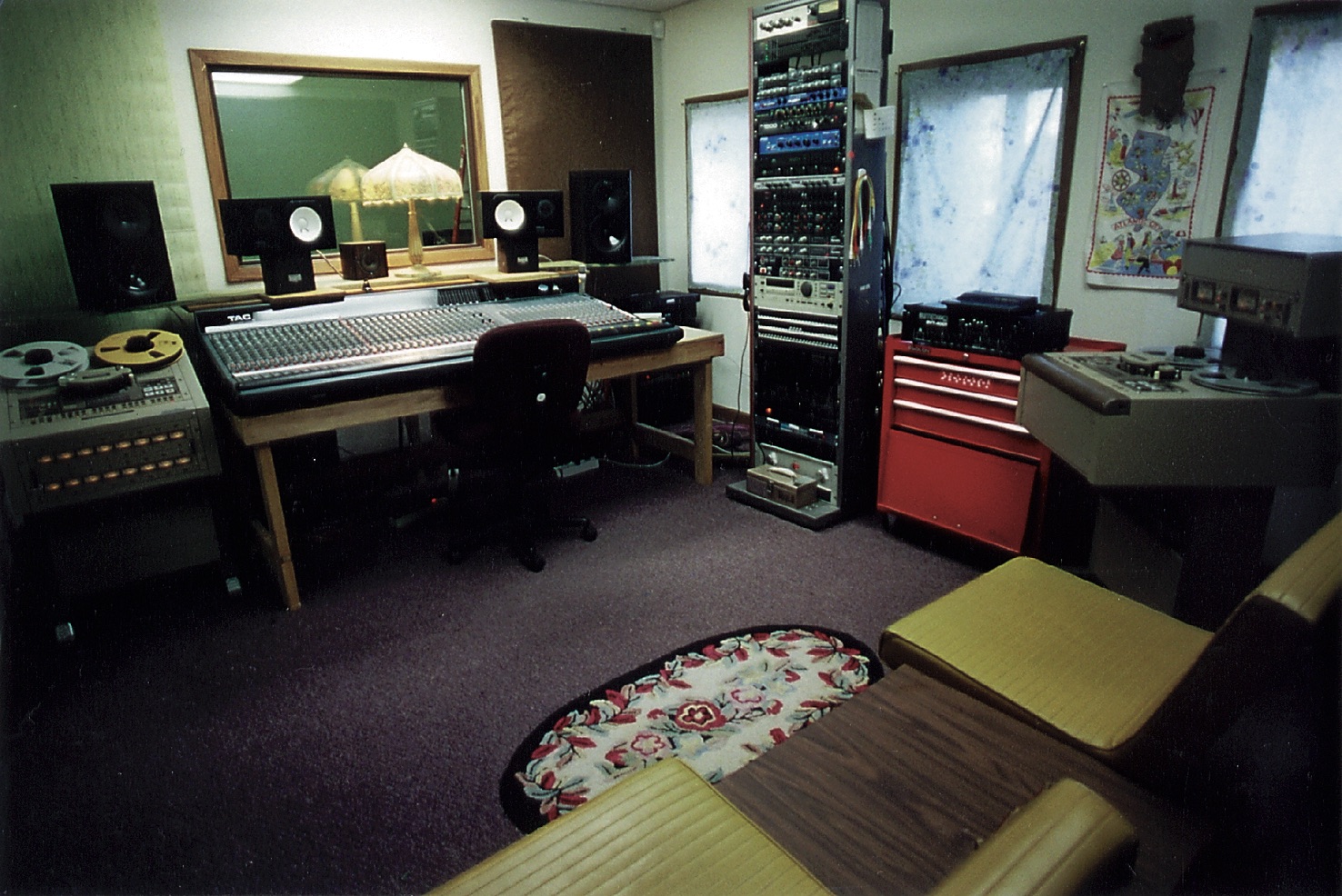
Yeah, I hate asking this question.
Well, it's an important question because there are not many women engineers. I think bands are usually coming to me because they hear about me from other bands — about what I do or how I am to work with. The ice is kind of broken. I don't think that I used to take control of the session as I do now. Like I really know what needs to be done and I do a lot of talking with bands beforehand in terms of how they have thought about recording and what they want to do. I'm not very imposing, yet I know we have this amount of time to do this amount of work. They have already chosen to work with me, so there's no need for me to break down gender barriers. There's is an issue when I need to exert some kind of control over a situation. I had these guys in here last week and we were working on a guitar lick for a song that threaded in and out with the vocals, and the guy just didn't know what the fuck he was doing. It wasn't rehearsed and he couldn't do the same thing twice. He is a really good player, but how his brain was understanding it was not working very well for session work. So I worked on this for four hours, just doing very simple stuff and then we did vocals for another song for another four hours and I hadn't really left the chair for about eight hours and I was just having trouble focusing on the words that were written down. When I finished the second song, they were like, "Okay, let's put up this next song and do these back-ups. Let's go." They were rushing. Basically I needed to stop the session and say, "Look. I need you guys to understand that there's a certain amount of stuff that's needs to be done before I start the back-up vocals. I need to switch mics and compressors and EQ. I need to set levels and headphones mixes and all that crap." They got all like, "Oh, we totally understand. We are so sorry." They were treating me like this little girl — they were just being really condescending towards me about the whole situation and that made me really uncomfortable and stressed out. It's like, "You don't fucking understand and you just got to chill out." I never get confrontational in a session, but when I'm working with a bunch of guys and I have to take the reigns and pull very hard, they really don't know how to respond, but they end up responding because they think, "Now she's a bitch, now we have to be nice to her." I don't think that it's necessarily a gender thing.
Yeah, but how people react to that is different.
I think some guys might be a little bit nicer to me, you know. I think that guys may fart less because I'm a chick.
Well you're lucky, let me tell you. I wish that would happen sometimes here. They wouldn't have that "guy talk" around me.
No, I don't get any of that. I'm really outspoken and will call guys on shit if they are being offensive. I don't care how much they want to suck on tits 24- 7. I don't really care. I think that there's a sense of, "This is not really a zone where we can do this because we're working with a chick." and I'm thankful for it. There was a session where guys came in on a Sunday and had the Packers game on and drank a shit-load of booze, and one of them that was like "nigger" this and "dyke" that, and I was with these guys that I didn't know very well, and they were all really plastered. It was the first time that I really felt uneasy. I usually feel like I can handle any session, so I did the session and they left. When they called the next day to book more time, I said, "This is really not the environment where this shit can go on. I work with a very diverse group of people and how they live their lives is very cool here. I can't have folks like you coming in and dismantling the kind of safe base or whatever." Don't bring that shit in here. I'm not sure if I have lost projects because I am a woman. Because I just wouldn't know. I think that people work with who they are comfortable with, and if guys aren't comfortable with a woman then that's fine. Occasionally I'll see a chick who is doing live sound — I don't feel that we are in this cool girl camp that's in the engineering field. It's so much about the work that you do and how you are to work with. I mean chicks may be cooler on some levels, but guys are cooler on others. I've never felt, from starting with live sound and then moving to Smart, that it was never ever an issue. It was, "Wendy there's a session Saturday, just do it." So I have a lot of respect for the training that I got. I think having guys and chicks in on sessions can make it a better session, and sometimes it doesn't matter at all.
You probably get a lot of bands that are coming in with garbage amplifiers, beat-up kits and you are asked to perform miracles in those situations.
I tend to really stress to the bands about getting guitars set-up and putting new strings on. I can't tell you how many times a band has left here knowing what they needed to do to their gear. And they learned it by recording with it like shit. 9 out of 10 guitars are not set-up. I mean I have a couple of strats here and my bass player always leaves his stuff here. So I always have stuff to use, but sometimes bands play crazy loud and I'm reluctant to say, "Here's my cabinet." It's tough knowing that I might have to pay for something to be fixed. Chances are the band's just not going to.
Plus if the band isn't hot in the first place it's not going to make a difference.
Bands come in that don't sound good and their recordings reflect that. There are engineers that I know who really have this problem. They will do anything to make it sound awesome. But I usually don't have that kind of time, and the bands don't have that kind of money. I know that some projects I do don't sound as good as others, and that's okay. I'm just doing the best that I can. That's probably not the greatest approach, but I think just for self preservation. You are already exerting so much of yourself in your session. I mean I can make suggestions, but if someone comes in with a bad sound and likes it. They say, "Well that's my tone."
Or "That's my signature, that defines my style."
That's, "Whenever I get credited on your record, call me Sandy."
Do you really do that?
No!
That'd be good. I've thought about doing that!
No! This town is really small like that.
